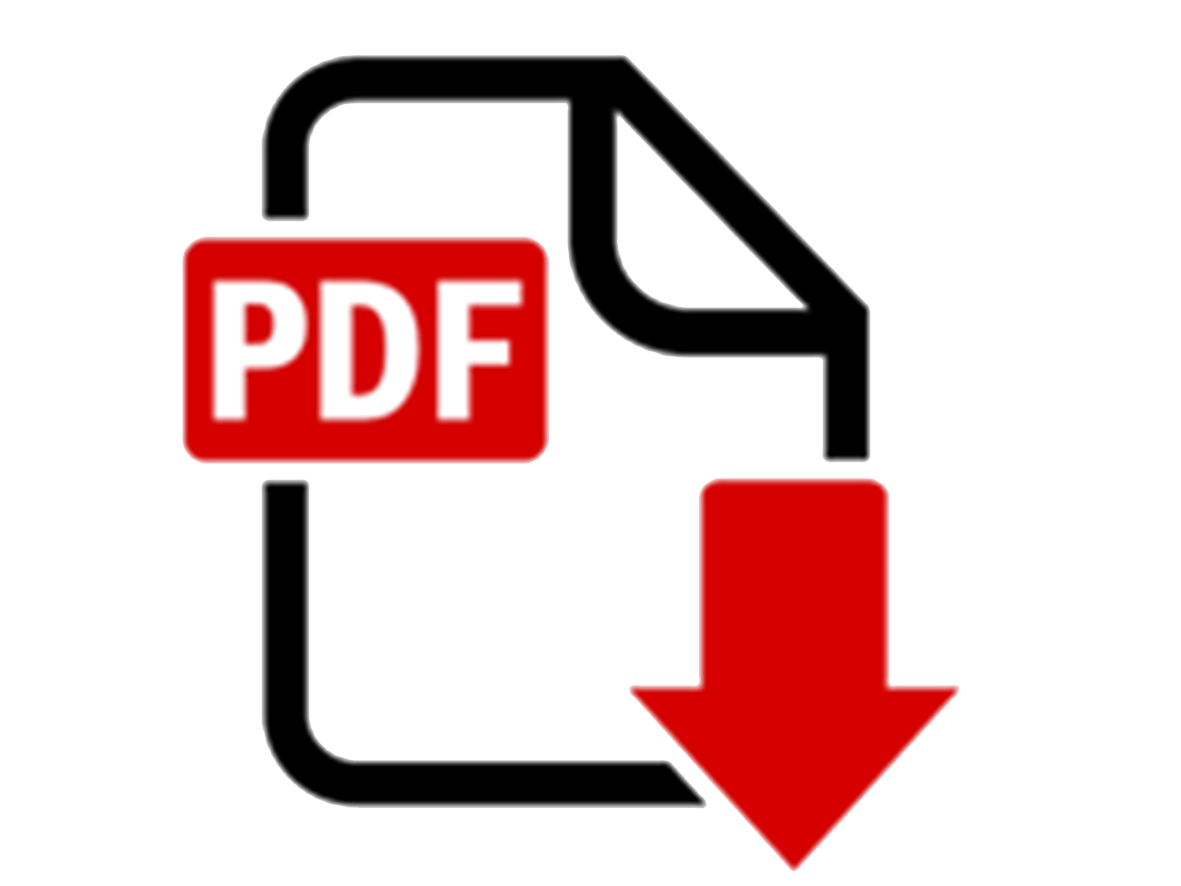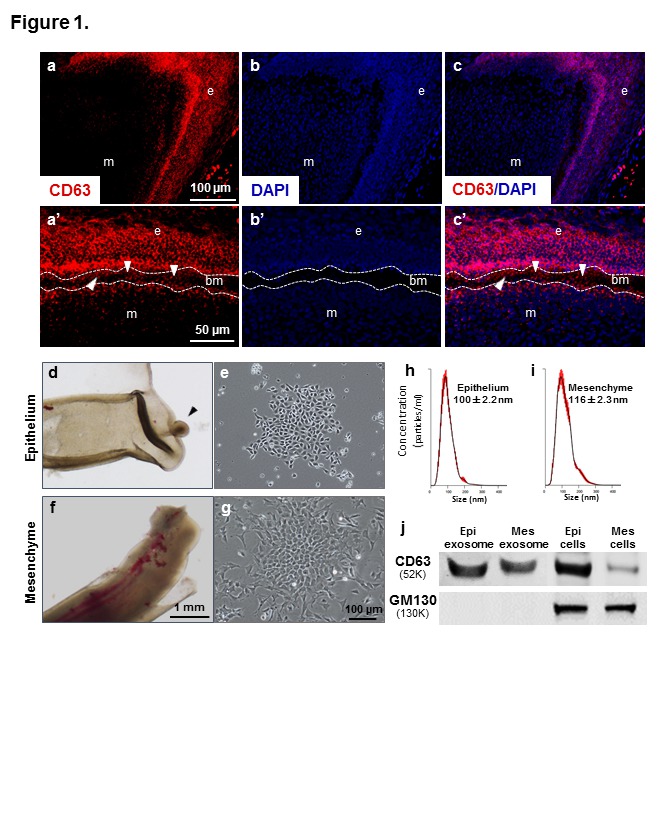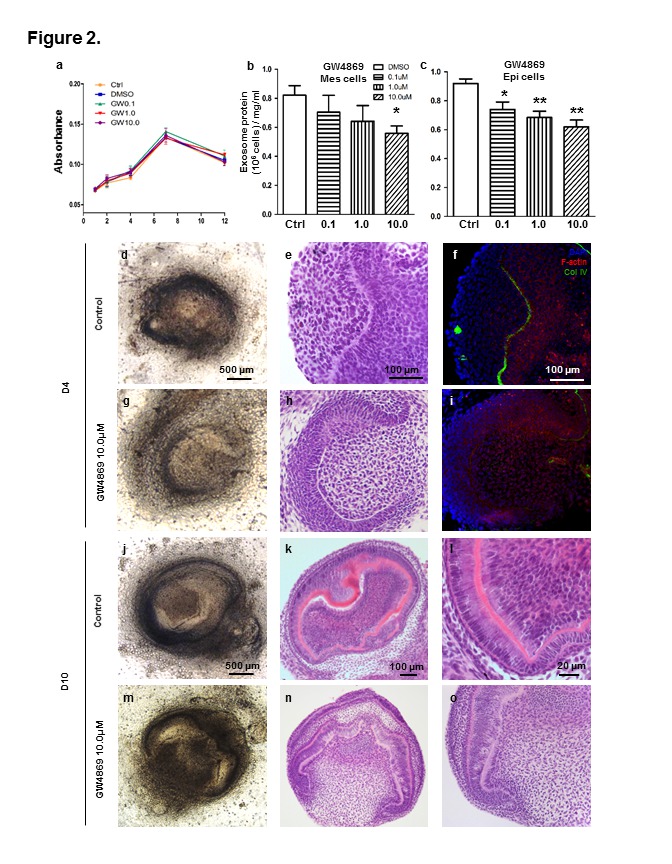IADR Abstract Archives
Exosomes in Epithelium and Mesenchyme Interactions During Tooth Development
Objectives: Genesis of many organs requires an indispensable reciprocal interaction between the epithelium and mesenchyme, including the tooth. Exosomes are extracellular vesicles and engage in novel roles in intercellular communication in cancer and immune cells. We hypothesized that exosomes are present in dental epithelium and mesenchyme tissues and play pivotal roles during tooth development.
Methods: Exosomes were harvested from dental epithelium and mesenchyme of 4/5-day rat incisors and identified by size analysis and CD63. Dental epithelium and mesenchyme stem/progenitor cells were treated with reciprocal exosomes, with their functions separately analyzed by RT-PCR and western-blot. E16.5 mouse tooth germs were reconstituted and organ-cultured (Trowell system) to yield amelogenesis and dentinogenesis with or without GW4869 or Rab27a/b shRNA that reduced exosome secretion. A genome-wide microarray identified novel exosomal proteins and miRNAs. Rab27a mutant mice (C3H/HeSn-ash/ash) were used to test exosome functions in vivo. All quantitative data were analyzed statistically by one-way ANOVA and Bonferroni adjustment.
Results: Extracellular vesicles from dental epithelium and mesenchyme were 100±2.2 nm and 116±2.3 nm, respectively, consistent with reported exosome size, and further were positive to CD63, a key exosome marker. Cy3-labeled dental epithelium exosomes were endocytosed into mesenchyme cells and upregulated dspp expression over 10-fold. Conversely, mesenchyme exosomes were endocytosed into epithelium cells that in turn produced amelogenesis and basement membrane (BM) components including Collagen IV and laminin. Reduced exosome secretion separately by GW4869 or Rab27a/b attenuated dentinogenesis and BM formation, leading to undeveloped tooth germs in organ culture. Rab27a mutant (C3H/HeSn-ash/ash) mice showed reduced dentin formation. Genetic profiling revealed over 400 exosomal proteins and miRNAs. miR-135 was significantly enriched in exosomes than their target cells, and robustly upregulated Wnt/β-catenin signaling in dental mesenchyme cells.
Conclusions: Exosomes and their constituting molecules (proteins and miRNAs) may have pivotal functions in the regulation of epithelium-mesenchyme interactions in the morphogenesis and regeneration of tooth.
Methods: Exosomes were harvested from dental epithelium and mesenchyme of 4/5-day rat incisors and identified by size analysis and CD63. Dental epithelium and mesenchyme stem/progenitor cells were treated with reciprocal exosomes, with their functions separately analyzed by RT-PCR and western-blot. E16.5 mouse tooth germs were reconstituted and organ-cultured (Trowell system) to yield amelogenesis and dentinogenesis with or without GW4869 or Rab27a/b shRNA that reduced exosome secretion. A genome-wide microarray identified novel exosomal proteins and miRNAs. Rab27a mutant mice (C3H/HeSn-ash/ash) were used to test exosome functions in vivo. All quantitative data were analyzed statistically by one-way ANOVA and Bonferroni adjustment.
Results: Extracellular vesicles from dental epithelium and mesenchyme were 100±2.2 nm and 116±2.3 nm, respectively, consistent with reported exosome size, and further were positive to CD63, a key exosome marker. Cy3-labeled dental epithelium exosomes were endocytosed into mesenchyme cells and upregulated dspp expression over 10-fold. Conversely, mesenchyme exosomes were endocytosed into epithelium cells that in turn produced amelogenesis and basement membrane (BM) components including Collagen IV and laminin. Reduced exosome secretion separately by GW4869 or Rab27a/b attenuated dentinogenesis and BM formation, leading to undeveloped tooth germs in organ culture. Rab27a mutant (C3H/HeSn-ash/ash) mice showed reduced dentin formation. Genetic profiling revealed over 400 exosomal proteins and miRNAs. miR-135 was significantly enriched in exosomes than their target cells, and robustly upregulated Wnt/β-catenin signaling in dental mesenchyme cells.
Conclusions: Exosomes and their constituting molecules (proteins and miRNAs) may have pivotal functions in the regulation of epithelium-mesenchyme interactions in the morphogenesis and regeneration of tooth.



